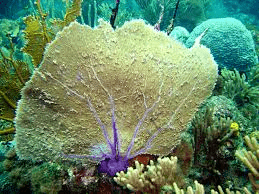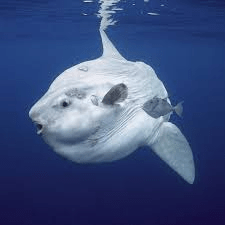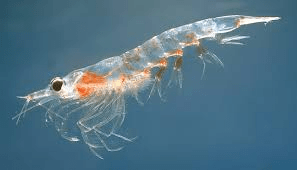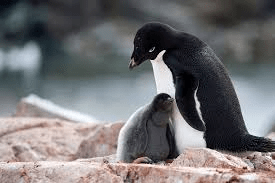This "colorful" tide occurs in warm waters when there is an increase of protozoa called dinoflagellates
Red Tide
Soon after hatching, loggerhead ones ride currents out to sea to escape predators & grow
turtles
In 2022 the deepest fish, a snailfish, was found at over 27,000 feet in the Izu-Ogasawara one of these deep ocean depressions
Trench
In 1977 this submersible, which shares its name with a chipmunk, found organisms near Hot Springs over a mile deep
Alvin
Found in bodies of water & other moist environments, these single-celled algae have cell walls made of silica
Diatoms
Marine biology with a touch of military history: during World War II, Scripps Institution of Oceanography scientists identified a crustacean whose noises were interfering with the detection of these enemy vessels
Submarines
Although some species of this in the class Asteroidia have more than 20 arms, 5 is the usual number
Starfish
The Venus sea fan, a soft type of this, has numerous polyps that grow together in a fanlike pattern, with each polyp having 8 tentacles
Coral
A new theory says that as cetaceans evolved from land animals, the nostril moved to the top of the skull & became this orifice
Blowhole
Researchers recognize individual whales & follow their migration based on the pattern on the underside of this, each half of the whale's tail
Fluke
Some species of shrimp dig burrows that provide shelter for goby fish which, in turn, act as lookout for the nearly blind shrimp; it's an example of mutualism, which, of the main types of this relationship, is the one where both parties benefit
Symbioses
Like jellyfish, sea anemones have stinging cells in these organs to paralyze small animals
Tentacles
The heaviest bony fish at a weight of more than 6,050 pounds, it has a celestial name & dines mainly on jellyfish
Sunfish
Unlike the stingray, this "devilfish" doesn't have a stinger in its tail
Manta Ray
The largest species of this fish is the bluefin, which may reach a length of 14 feet & weigh 1,600 pounds
Tuna
This cartilaginous fish with a barbed tail & its mouth on its underside lives on the ocean bottom; its relative, the manta ray, is found in open waters, so I wonder how the classic marine biology text, "Rock Lobster" by the B-52s, can possibly have them swimming together
Stingray
A brown alga, this largest seaweed can grow 200 feet long & forms forests off the California coast
(giant) Kelp
This member of the weasel family is the only marine mammal that catches fish with its forepaws, not its mouth
Sea Otter
Baja's sea lions can dive deep because they have the ability to store substantial amounts of this gas in their blood & muscle
Oxygen
Shagreen, the dried skin of this meat eater, was once used as sandpaper
Shark
Not always circular, this type of coral reef encloses a lagoon
Atoll
This small five-letter animal seen here is the main food source of the Antarctic blue whale
Krill
When buried in the sand, skates & rays rely on these holes near the eyes for breathing oxygen
Spiracles
This species of penguin that historically have inhabited the Antarctic Pennisula are rapidly declining due to the loss of sea ice.
Adelie
Unlike most sea animals, in the sea horse this pair of sense organs can move independently of one another
Eyes